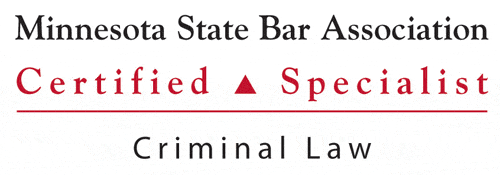Domestic violence in Minnesota is taken very seriously. Because of the extent the law goes to protect those who are at risk of domestic violence, there are two ways that the court can address harassment: harassment restraining orders and orders for protection.
These two different types of legal remedies for people at risk share much in common, but there are many differences between them, too. These differences often lead to confusion among those who are seeking protection or those who are subject to the orders – and they’re important details to get right, so you don’t end up accidentally violating an order.
Here’s what you need to know about Minnesota harassment restraining orders and orders for protection, including ways that they are the same and how they are different.
Minnesota Order for Protection and Harassment Restraining Order: What Are They?
First, we’ll start by defining each of these two things in order to help gain a clearer understanding.
A Minnesota Order for Protection is an order issued by the court to stop family or household violence. It orders the person named as the respondent to not contact you or come within a certain distance of you so that you can avoid being hurt. It can also make the petitioner leave the home if they share one with you.
A Minnesota harassment restraining order is an order that compels another person to stop contacting you. It is issued by a judge or other judicial officer. It is not a criminal proceeding but instead something that takes place in a civil court.
Relationship Between Respondent and Petitioner
The relationship between the person named as the respondent and the petitioner can have an impact on the type of order sought. If you want to qualify for an order for protection, then the person filing the order must meet certain eligibility requirements. These include:
- Being related by blood to the respondent
- Have previously or currently lived with the respondent
- Being pregnant with the baby of the respondent or someone who shares a child with them
- Have been or are currently involved in a romantic relationship with the respondent
In order to be granted an order for protection, you must be a household or family member. However, for a harassment restraining order, there does not need to be any type of specific relationship between the two people involved in order to be granted one.
Other Standards for Eligibility
For an order for protection, there are other eligibility requirements beyond the relationship between the respondent and petitioner. To qualify, the petitioner must also have suffered bodily injury, assault, physical harm – or they were put in fear of imminent harm, injury, or assault.
For harassment restraining orders, the same eligibility standard applies to fear of physical harm or previous instances of physical harm. Also, those asking the court for a harassment order of protection may have endured acts that impacted their sense of privacy, safety, or security, as well as unwanted gestures or words. These acts much have taken place on more than one occasion in order to qualify.
Do Orders for Protection or Harassment Restraining Orders Cost Money?
Most things involving the court will require a filing fee of some sort, including harassment restraining orders. The court can ask you to pay more than $300 to file one, but they can be avoided in cases where the petitioner is unable to pay the fee or they are a victim in a criminal harassment case.
Orders for protection do not require any fee when a person petitions for them due to the fact that they are a criminal matter.
What Does Each Do for the Petitioner?
Both orders for protection and harassment restraining orders offer legal protections to the petitioners, but much of what they can do varies.
With orders of protection, a respondent can be removed from shared dwellings by law enforcement. Temporary parenting arrangements and custody can also form part of the case if it’s in the best interest of the children involved. The removal of weapons from the home of the respondent can be requested in a case involving an order for protection.
Harassment restraining orders, however, do not allow forcible removal. There are also no provisions that address weapons owned by the respondent or child custody arrangements.
They do work to limit contact between the parties, and they can aid in stopping unwanted treatment.
There are reasons to consider getting either an order for protection or a harassment restraining order. The circumstances of your case dictate what you can do, so make sure to consult with an experienced attorney to understand these orders and what might apply in your case.
About the Author:
Christopher Keyser is an AV-Preeminent rated criminal and DWI defense attorney based in Minneapolis who is known for fighting aggressively for his clients and utilizing innovative tactics to get the most positive results. He has been featured in numerous media outlets due to the breadth and depth of his knowledge and named a Certified Specialist in Criminal Law by the Minnesota Bar Association. Mr. Keyser is Lead Counsel rated, and he has received recognition for his criminal law work from Avvo, Expertise, Super Lawyers, The National Trial Lawyers, and more.








